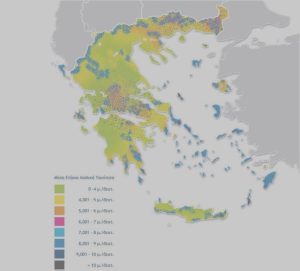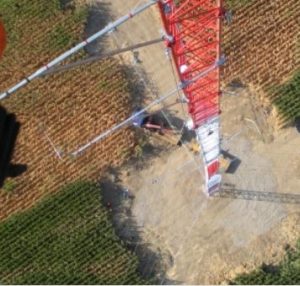Written by Vaggelis Ioannou, electrical engineer at Wattcrop.
Wind resource assessment is the most time-consuming procedure in majority of wind projects, and it determines the future of a project since it provides valuable data for it such as average wind speed, average wind density energy, Annual Energy Production (AEP), losses and uncertainty associated with AEP. Lack of wind resource or insufficient strictness with respect to technical due diligence during wind resource assessment leads to delayed or rejected projects by financiers. Therefore, a proper wind resource assessment is crucial for the project life and timeline.
A wind resource assessment procedure consists of the following steps:
- Prefeasibility and Prospecting studies which are the preliminary wind resource assessment study
- Wind Measurement
- Linear wind flow model-based estimation of AEP
- Computational fluid dynamics model-based estimation of AEP, if required
- Loss and Uncertainty estimation

In many cases developers take shortcuts with wind measurements such as using lower wind masts, using uncalibrated wind sensors, poor data processing and recovery leading to invariably delays to the Project because financiers required rigorous wind resource assessment. The key-factors for a high-quality wind measurement are:


Use high-quality calibrated anemometers as
- much closer to hub height as possible (preferable more than 2/3 of the Hub Height).
- Anemometers installation at multiple heights (preferable at 3 heights) to perform more accurate vertical extrapolation
- Use redundant anemometers to minimize any potential tower shadow or sensor failure.
- Use long booms to minimize the impact of flow distortion
- Installation of two or more wind masts in the Wind Farm, preferably one mast per 5 – 8 WTGs or 10 – 20 MWs depending on the terrain complexity
- Data management – Data collection and analysis
- Data measurements for at least 1 year. Longer period data availability reduces the uncertainty during wind resource assessment enhance the long-term AEP estimation.
In general, the activities that can significantly reduce the lead time of wind projects with regards to licensing process and constitutes the minimum requirements that the wind resource assessment of a project should meet are:
- At least 1 year wind measurement data with appropriate met-tower height, calibrated sensors, and different heights of measurements
- Linear wind flow model should be used for AEP estimation considering a simple terrain or a computational fluid dynamics model should be used for a complex terrain.
- Long term AEP correction should be performed to take under consideration the variability of the wind climate
- Site-specific losses and uncertainty should be estimated
- Extreme wind conditions should be also considered to choose the class of the turbines that are suitable for the site.
- Since Wind Farms are mostly constructed on mountains the site accessibility and its complexity should be also considered during the assessment. Also, in complex site access a preliminary route survey should be conducted to reduce the risk of any unforeseen costs.
- Also, Grid Interconnection should be also checked before utilizing a project with respects to the availability of any nearby substations or power transmission lines.
Concluding, wind resource assessment is a crucial stage in the development phase of a wind project. During this stage the project can be considered bankable or nonbankable according to the findings. Even if the wind resource is sufficient for a viable project, the performance of wind measurement and wind flow modeling to compute AEP reducing the uncertainty during wind resource assessment will determine the project life.

